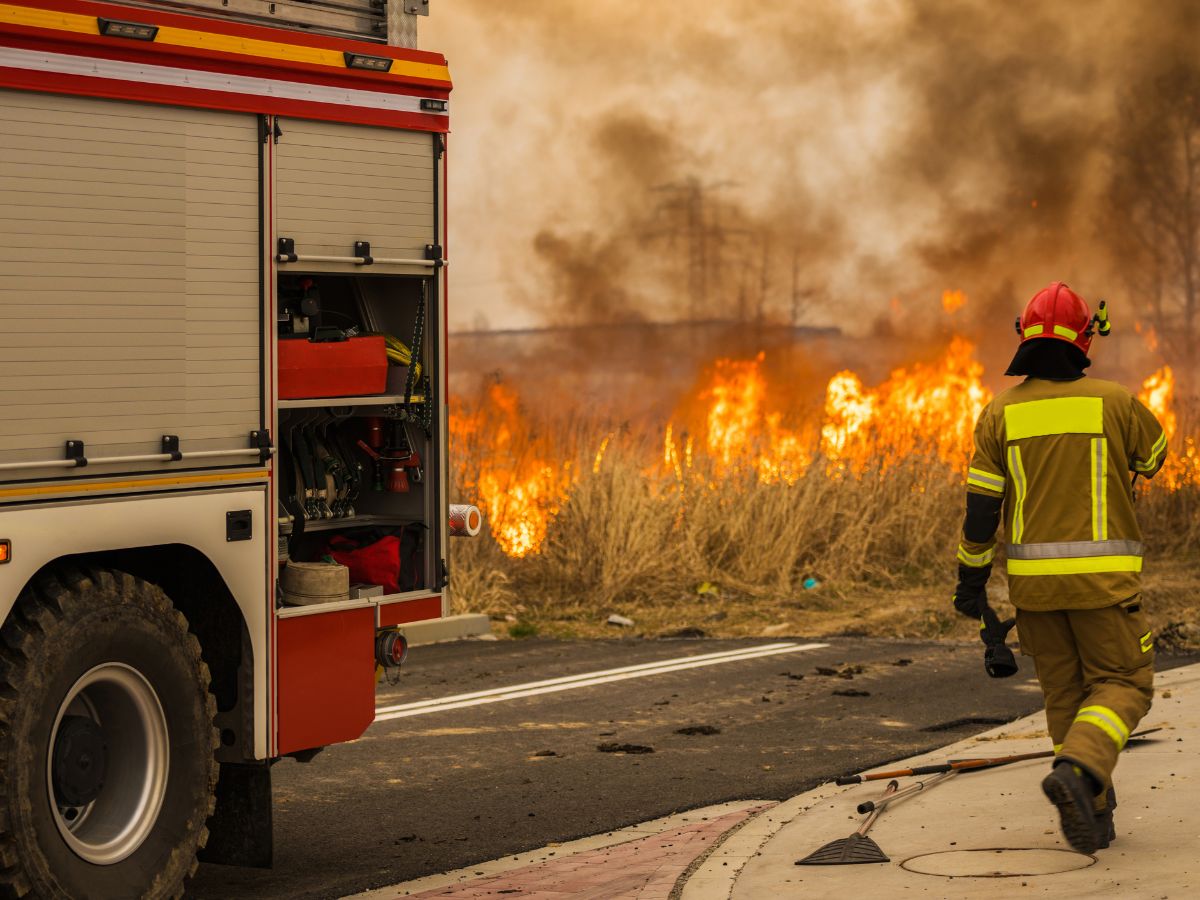Australia’s natural beauty comes with its challenges, and bushfires are one of the most prominent. With an ever-increasing focus on fire safety, the Bushfire Attack Level (BAL) rating has become a critical factor for homeowners, particularly for those renovating or building homes in bushfire-prone areas.
We explore what a BAL rating is, why it matters, and why every homeowner should understand it before making changes to their property.
What is a BAL Rating?
The BAL rating is a measure of a property’s potential exposure to ember attack, radiant heat, and direct flame contact during a bushfire. It assesses how vulnerable a building is to bushfire risks based on its location, the surrounding vegetation, slope, and distance from the vegetation.
The six BAL levels, as defined by Australian Standard AS3959:2018, range from BAL-LOW to BAL-FZ (Flame Zone):
- BAL-LOW: Minimal risk, no specific construction requirements
- BAL-12.5: Low risk, with potential ember attacks
- BAL-19: Moderate risk, with increasing levels of radiant heat
- BAL-29: High risk, requiring more stringent construction standards
- BAL-40: Very high risk, with a significant level of radiant heat and potential for direct flame contact
- BAL-FZ (Flame Zone): Extreme risk, requiring the highest level of bushfire-resistant construction
Why BAL Ratings Are Important
We know it may seem like it, but a BAL rating isn’t just a regulatory tick box; it directly impacts the safety, design, and cost of a property. There are a few reasons why BAL ratings are important.
Safety for Your Home and Family
Knowing your property’s BAL rating helps you assess its vulnerability to bushfires. If your home is in a high-risk area, you’ll need to implement construction and landscaping techniques to mitigate fire risks.
For instance, ember-proofing roof vents, using bushfire-resistant windows, or installing non-combustible cladding could make a significant difference in protecting your home during a bushfire event.
Compliance with Regulations
BAL ratings are legally required for new builds and significant renovations in bushfire-prone areas. Councils and planning authorities mandate that homes comply with specific building codes tailored to their BAL rating. Failing to meet these standards could result in fines, delays, or worse – an unsafe home.
Cost Implications
Building or renovating in areas with higher BAL ratings often involves additional costs. These could include specialised materials, fire-resistant designs, and professional assessments. Understanding your BAL rating early in the renovation process allows you to budget effectively and avoid unexpected expenses.
Impact on Insurance
Your BAL rating can affect your home insurance premiums. Homes in high BAL zones may face higher premiums due to increased bushfire risks. Being aware of your BAL rating can help you shop around for competitive insurance policies and ensure adequate coverage.
Understanding BAL Ratings for Renovations
Whether you’re adding a new deck, installing larger windows, or extending your home, understanding your BAL rating is critical.
Before starting renovations, consult a bushfire planning and design consultant or contact your local council. They can assess your property’s BAL rating and provide guidance on construction requirements.
Choose the Right Materials
Your BAL rating dictates the type of materials you can use. For example:
BAL-LOW: Standard materials are usually acceptable.
BAL-19 or higher: Non-combustible materials for roofs, walls, and decking are often required.
BAL-40 or BAL-FZ: Advanced bushfire-resistant systems and glazing may be necessary.
Plan Landscaping Wisely
Landscaping plays a key role in reducing bushfire risks. Avoid planting flammable vegetation close to your home, use gravel instead of mulch, and ensure adequate spacing between plants.
Hire Experienced Professionals
Working with builders and architects who are familiar with bushfire regulations ensures your renovations meet compliance standards. This not only improves safety but also reduces the risk of costly rework.
Long-Term Benefits of Understanding BAL Ratings
Homes that comply with BAL requirements can appeal to future buyers, particularly those who prioritise safety. A well-prepared home may even command a premium in the real estate market.
Knowing your home is built or renovated to withstand bushfire threats also provides invaluable peace of mind.
By understanding and adhering to BAL ratings, homeowners play a part in broader community efforts to reduce bushfire impacts. Collectively, compliant homes can minimise property damage and improve recovery rates in affected areas.
Understanding BAL ratings is not just about meeting regulations; it’s about making informed decisions to safeguard your home and loved ones. Whether you’re renovating or building, taking the time to assess and address your BAL rating is a vital step in living safely in Australia’s bushfire-prone regions.
Need to know more about BAL ratings?
Are you looking to renovate and need to know more about meeting your BAL rating requirements? Reach out for a discussion.

